24 Hrs in Old Beijing
A visual tour of some of Beijing's classic and lesser-known travel sites.

24 Hours in Old Beijing is a visual journalism project created by the 2020-21 cohort of IMMJ, A Beijing-based Master's degree in Multimedia Journalism. The program is a collaboration between the University of Bolton, UK, and Beijing Foreign Studies University, China. Take a look at our UK and China-based programs here.
As Beijing's skyline rises further and further, its historic spots are sometimes eclipsed. We bring you to eight classic must-see spots. With the Covid pandemic limiting travel options, we aim to immerse armchair travelers in the sights and sounds of the city via video vignettes - and introduce you to some local Beijingers via portraiture.
7am
Beijing Breakfast
Huguo Temple

Feast your eyes on a visual tour of Beijing's traditional breakfast area.
The steam from carefully stacked breakfast snacks rises, filling the air with rich smells. If you want to start your day in the most authentic Beijing way, head to Huguo Temple Snack Street, famous for its rich choice of traditional local snacks. By 7 am the street is dominated by elderly folks, chatting loudly and ordering breakfast with the distinctive Beijing accent, defined by a pronounced ‘r’ at the end of words.
Sit among the locals while bowls of chalk-white ‘douzhi’, a fermented mungbean drink, are scooped up and brought to each table. The unique beverage can be intimidating at first sniff but native Beijingers love the tangy beverage. A bowl of hot douzhi is usually slurped straight from the bowl with a side dish or two of jiaoquan, fried rings of batter, and salty pickled vegetables to balance out the sour taste.
If douzhi is not to your taste, take your pick from the wide array of sweet sticky rice cakes, toasted sesame cakes or salted buns, the snacks cost next to nothing so fill your plate. The street is situated on the site of an old temple, Hugousi, founded 300 years ago in the Yuan Dynasty. The temple was ravaged by fires and no longer stands but it used to house a famous monthly temple fair, with acrobatics, hawkers and of course, the special foods and sweetmeats that can still be found today.
"I like to drink douzhi. (Traditional sweet and sour fermented bean milk). A bowl in the morning refreshes me right away. I come here just after 6 am for breakfast, and then take a stroll home."
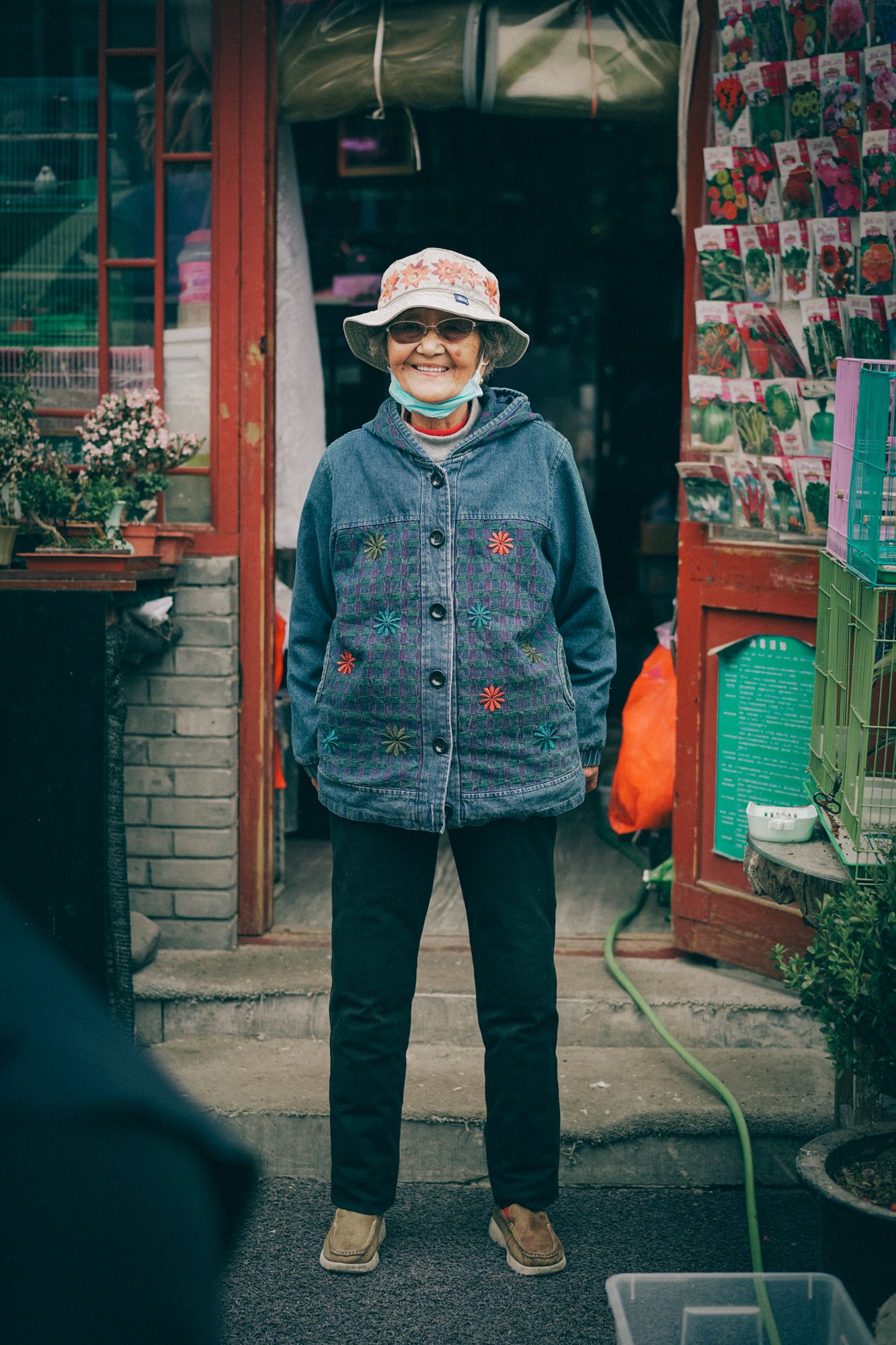
Mrs. Chen is a native Beijinger who has lived near Huguo Temple for ten years. She comes to the snack street every day for breakfast and a stroll.
Mrs. Chen is a native Beijinger who has lived near Huguo Temple for ten years. She comes to the snack street every day for breakfast and a stroll.
9am
Hutong Life
Bada Hutong
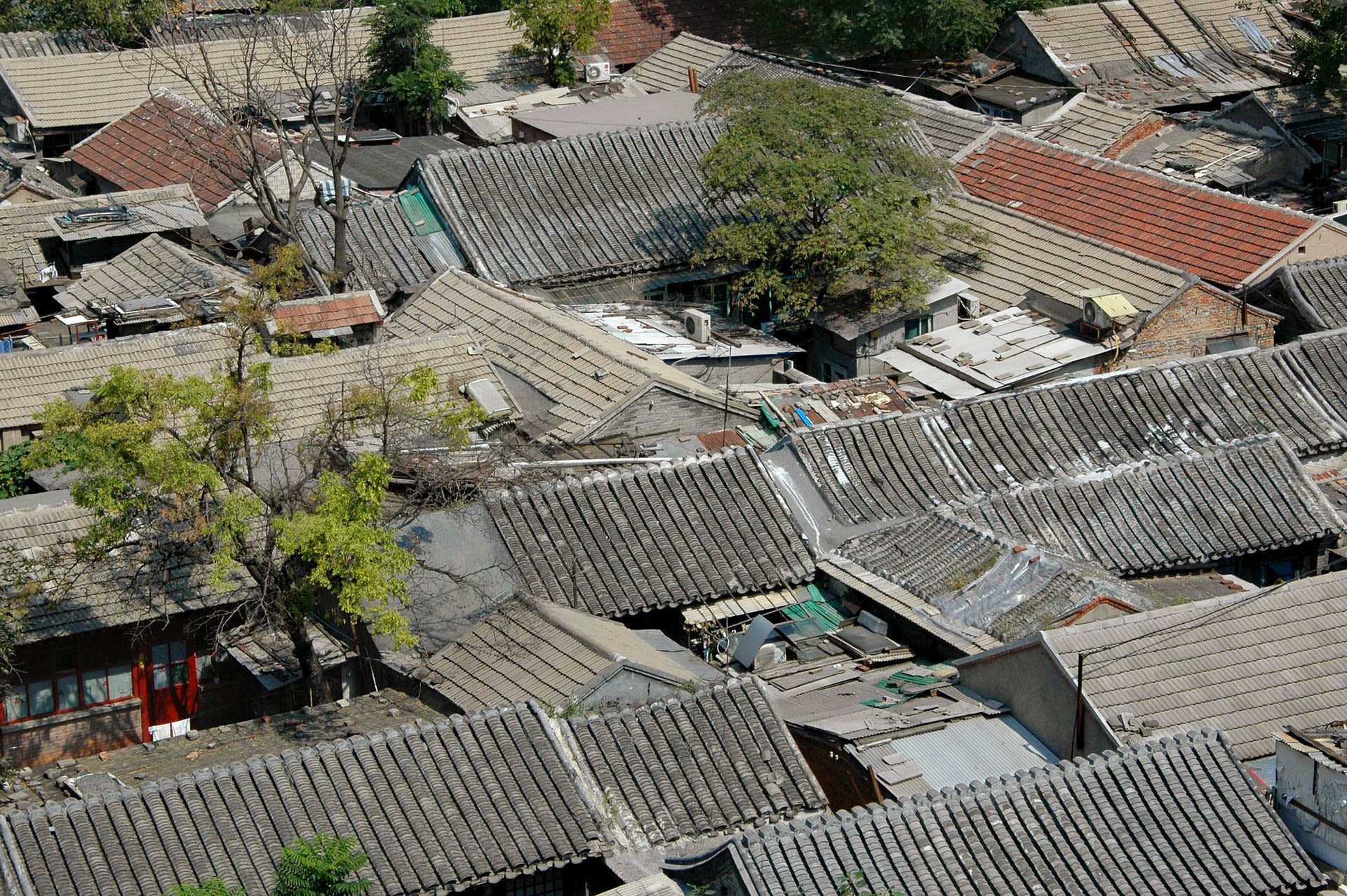
Get lost in the ancient alleyways of Bada hutong | Photo by Bruce Tang
Bada Hutong, also known as the Eight Hutongs refers to a central area of the city near Qianmen Gate. Bada was once notorious for its hundreds of brothels but today, the alleyways are one of the capital's few remaining districts where you can experience authentic Beijing residential life.
The word hutong refers to alleyways formed of traditional courtyard housing. Courtyard homes consist of four buildings arranged in a square around a central courtyard and are enclosed by a wall for privacy. The private structure means that unless you are invited inside, or stay in a local courtyard hotel, you’ll need to be content with observing Hutong life from the outside. Though if you view the video above, you can catch a glimpse of life inside the courtyards.
Originally courtyard homes housed three generations of a single family but during the cultural revolution and Beijing’s rapidly growing population, the homes became divided and occupied by several families living together, if you stroll around and peek into some gates you will find the courtyard homes of Bada have been transformed into dense residential quarters. Today, however, the area is under transformation again. It’s gradually being vacated, reconstructed, and renovated, which makes it all the more worthwhile to visit before the changes arrive.
If you stroll around the maze of connected alleyways, you will pass families making dumplings, women chatting in front of doors, old men playing chess under the shade of trees and colorful birds chirping tirelessly.
“It's been amazing to witness the transformation of the ‘Eight Hutongs’, from brothel to residential zone. Today, more and more people are moving away and I know the good old days with neighbors have gone forever. Now we have to embrace new ways of life.”

Wang Shanshu is a native Beijinger, he has lived in the “Eight Hutongs” for all of his 78 years.
Wang Shanshu is a native Beijinger, he has lived in the “Eight Hutongs” for all of his 78 years.
11am
Spiritual Sanctuary
Lama Temple
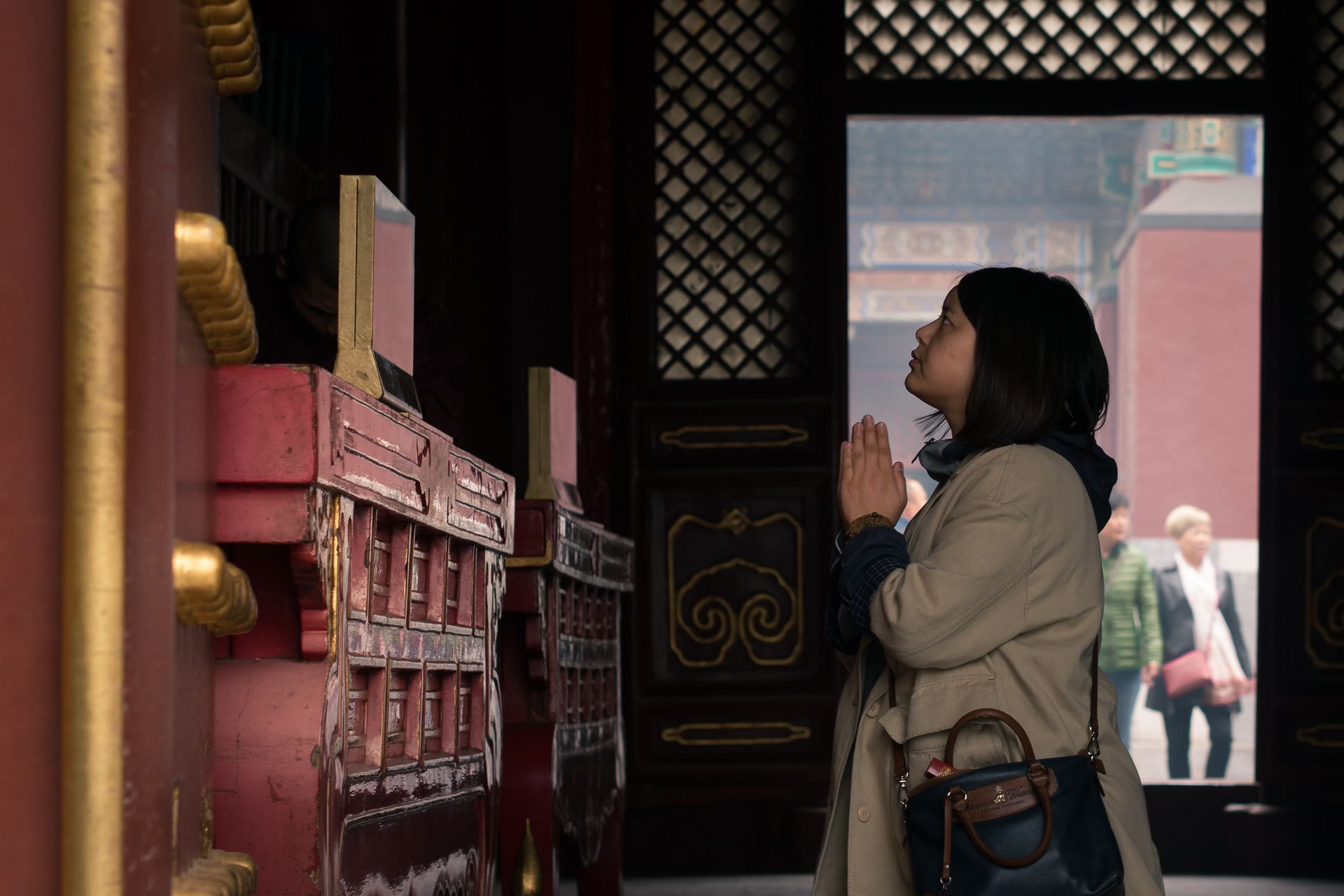
Take a tour of this historic Tibetan Temple in the heart of Beijing. | Photo by Magda Ehlers
The smell of incense mingles with the sounds of whispered prayers and the strike of bells. Visitors close their eyes, hold lit incense sticks above their heads, pray piously for blessings, bow, and bow again to the countless buddhas in the prayer halls. This is the Lama Temple in Beijing's northeast corner, the 17th century home of a prince and today a Buddhist temple. When you enter the temple, you will encounter two large lion sculptures. Once you enter the palace, you will see rich colored patterns, of the palace building, and find monks, religious visitors, and a few tourists.
The most spectacular time to visit is the first day of the first month of the Chinese New Year. On this day, throngs of people come to Lama Temple to worship the Buddha.
The Lama Temple is open to the public throughout the year. Admission is 25 Yuan ($4).
"Many people say it’s a very auspicious temple so we’re here to pray for the best for our future."
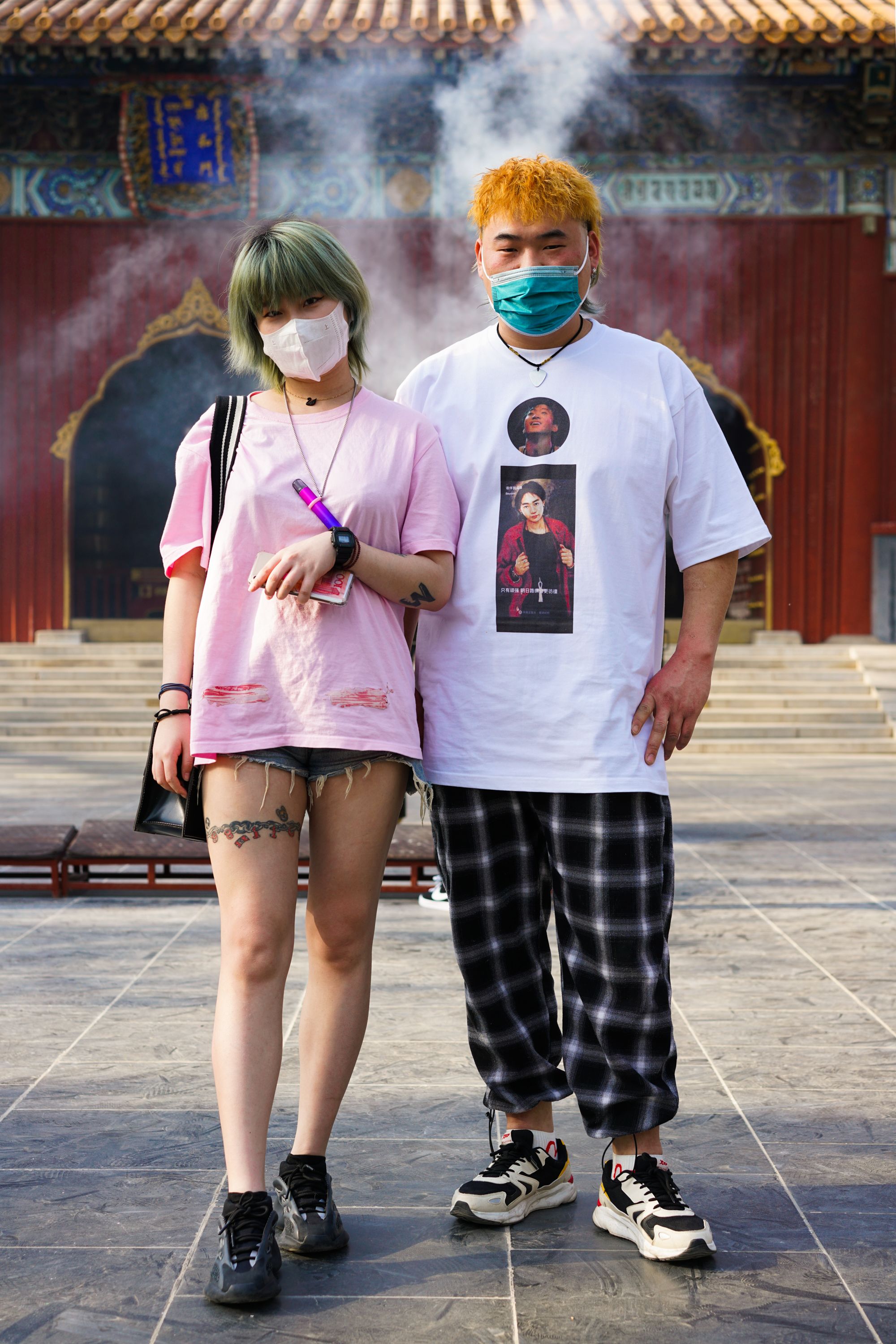
A young couple pray for a future happy marriage at Lama Temple.
A young couple pray for a future happy marriage at Lama Temple.
1pm
Beijing Rythm
Drum Tower
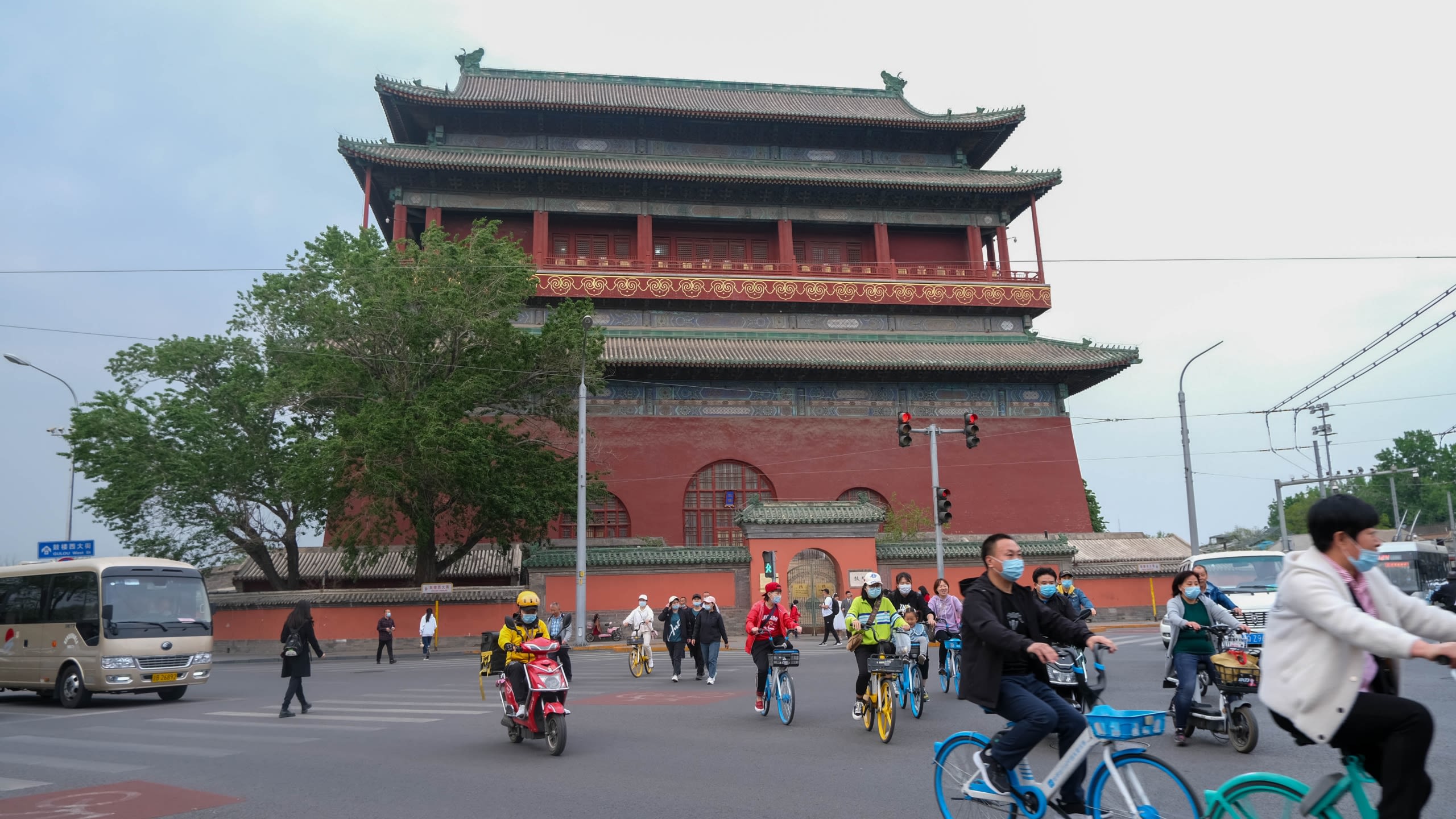
A video tour of Beijing's ancient Drum Tower and neighborhood.
Beijing's Drum Tower sits at the northern end of the central axis of the capital. It was built in the Yuan Dynasty (1272-1368) and acted as the time-telling center of Beijing through the Yuan, Ming (1368-1644), and Qing (1644-1911) dynasties. Originally there were 25 drums, the largest drum represents one year, while the other 24 group drums represent twenty-four solar terms.
Today there is a daily drum performance at the Drum Tower on the hour in the afternoons from XX to XX. A Belltower lies slightly north of the Drum Tower, the two buildings are unique in their layout. In the history of the construction of the city's bell and drum tower, Beijing's bell and drum tower is the largest in scale and tallest in shape. It is one of the landmarks of the ancient capital Beijing. The high technical level and immortal artistic value of Drum Tower fully demonstrate the wisdom and strength of the ancient people.
There is a small square between the bell and drum towers. Residents and tourists living nearby often go there for leisure and entertainment. Beijing Gulou street is ancient and thick, and it is lined with hutongs that can be reached directly to Shichahai and Yandaixie Street, where there are many China Time-honored brands and a variety of old Beijing snacks. Nowadays, Gulou street has gradually filled with the atmosphere of fashion. The integration of classical and modern makes Gulou street full of vitality.
Drum Performances are held daily year round at 10:00, 11:00, 13:30, 14:30, 15:30, 16:30 and 17:20.
"I come to Gulou three times each day to walk my dog, early in the morning, in the afternoon and in the evening after I finish my homework ."
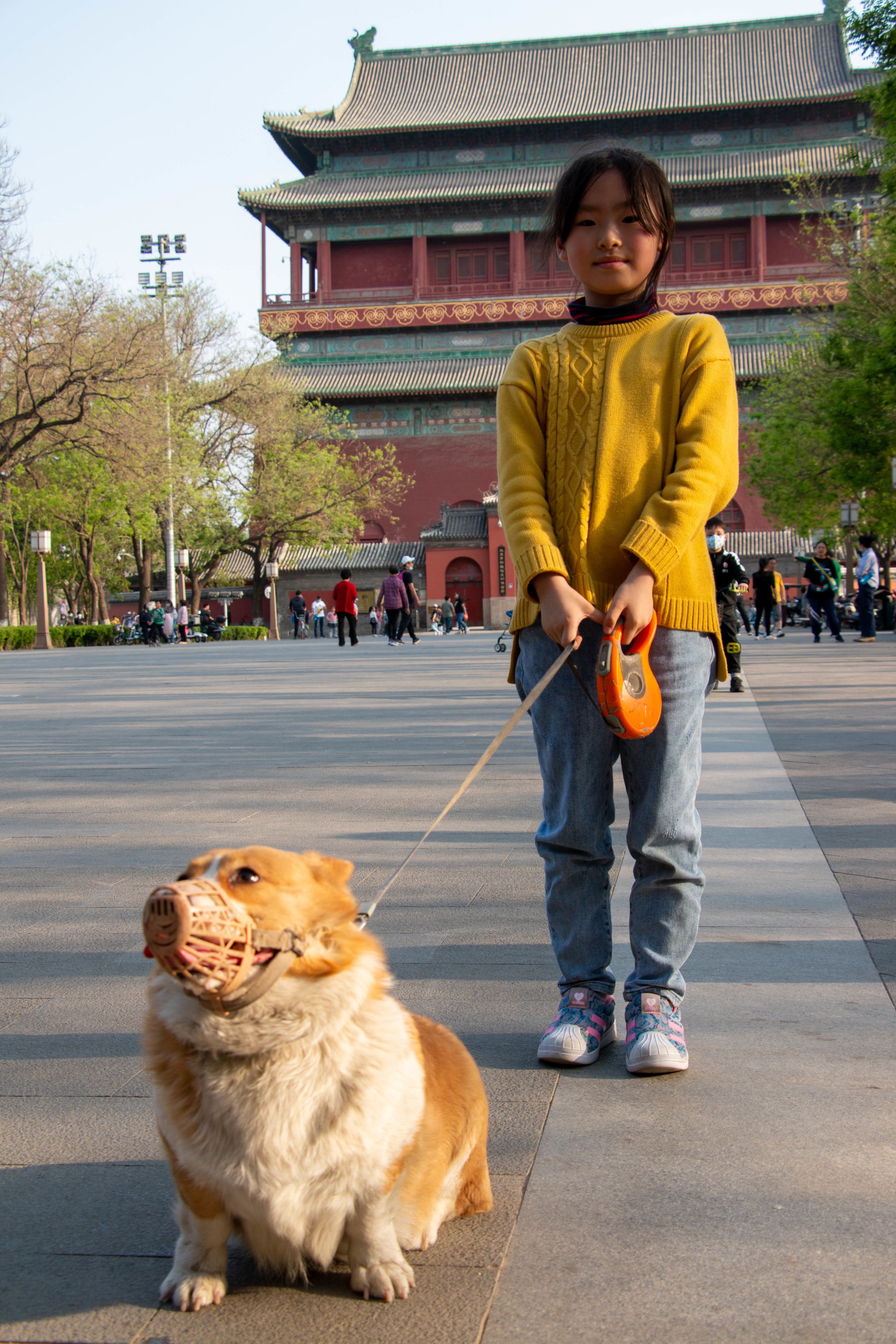
Yuanyuan lives in the Gulou neighborhood with her family and dog, Nicole.
Yuanyuan lives in the Gulou neighborhood with her family and dog, Nicole.
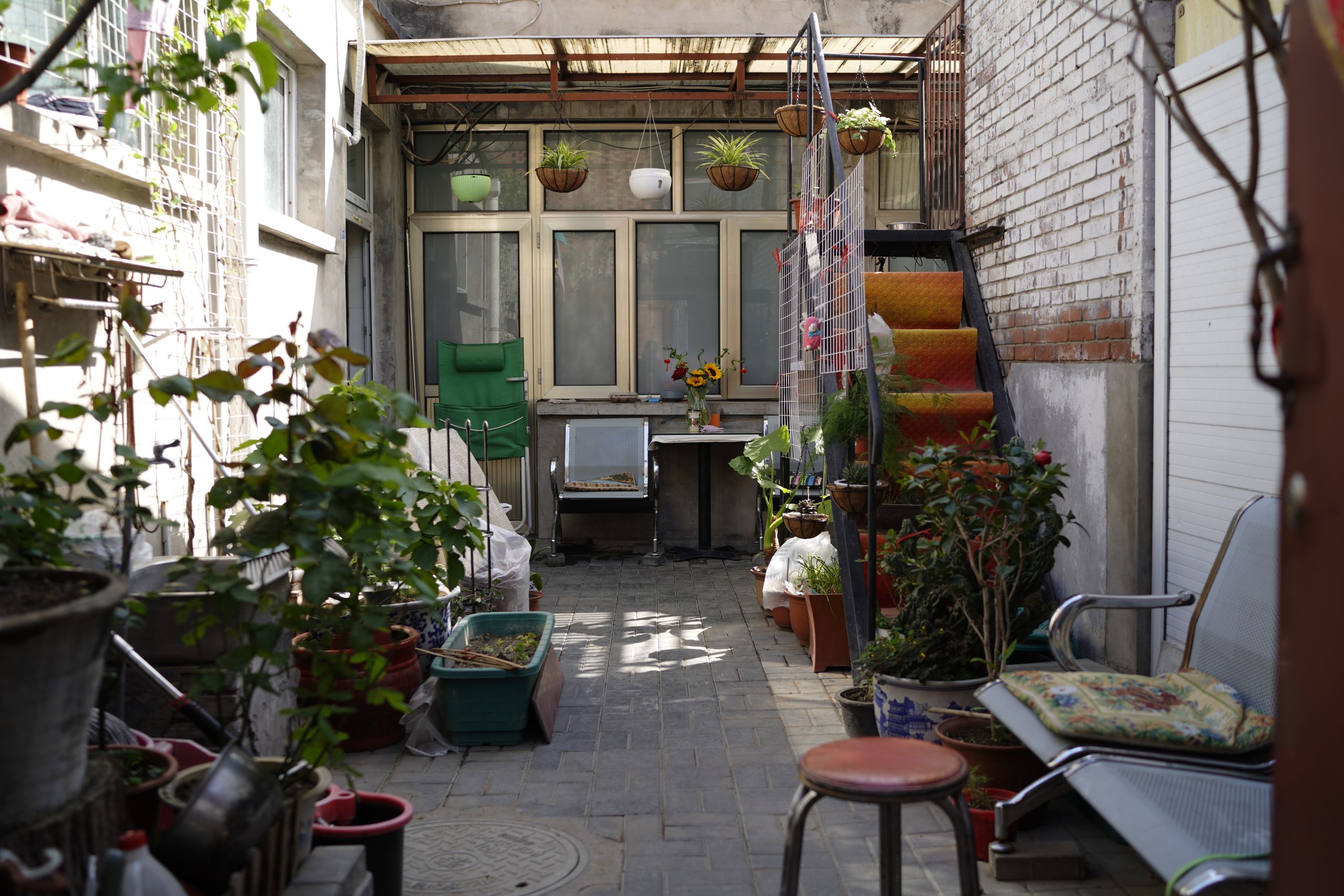
Local residents and designers mingle in the traditional yet renovated hutong.
Although Beijing has many hutongs, none quite compare with Yangmei Zhuxie street's mix of old and new. The street has been well protected and also renovated, locals and store owners live side by side and the narrow street is home to traditional workshops, vintage stores and even design studios. Do check out Beijing Postcards at number 97 - they showcase oral history projects and organise community events, including public walk-and-talks on the weekend.
A stroll along Yangmei Zhuxie paints a vivid picture of authentic Beijing hutong life unlike many of the more commercialized hutong areas. If you can, stay for the sunset for an extra nostalgic vibe. We recommend a coffee at Soloist Coffee Co at dusk to take in the view from the second floor. It is popular among young people and artists.
You can see a variety of Beijingers in the hutong, all different ages mix togther and it makes life interesting. When the weather is fine, I sit outdoors in the alley with my dog in my arms and we bask in the sun together.
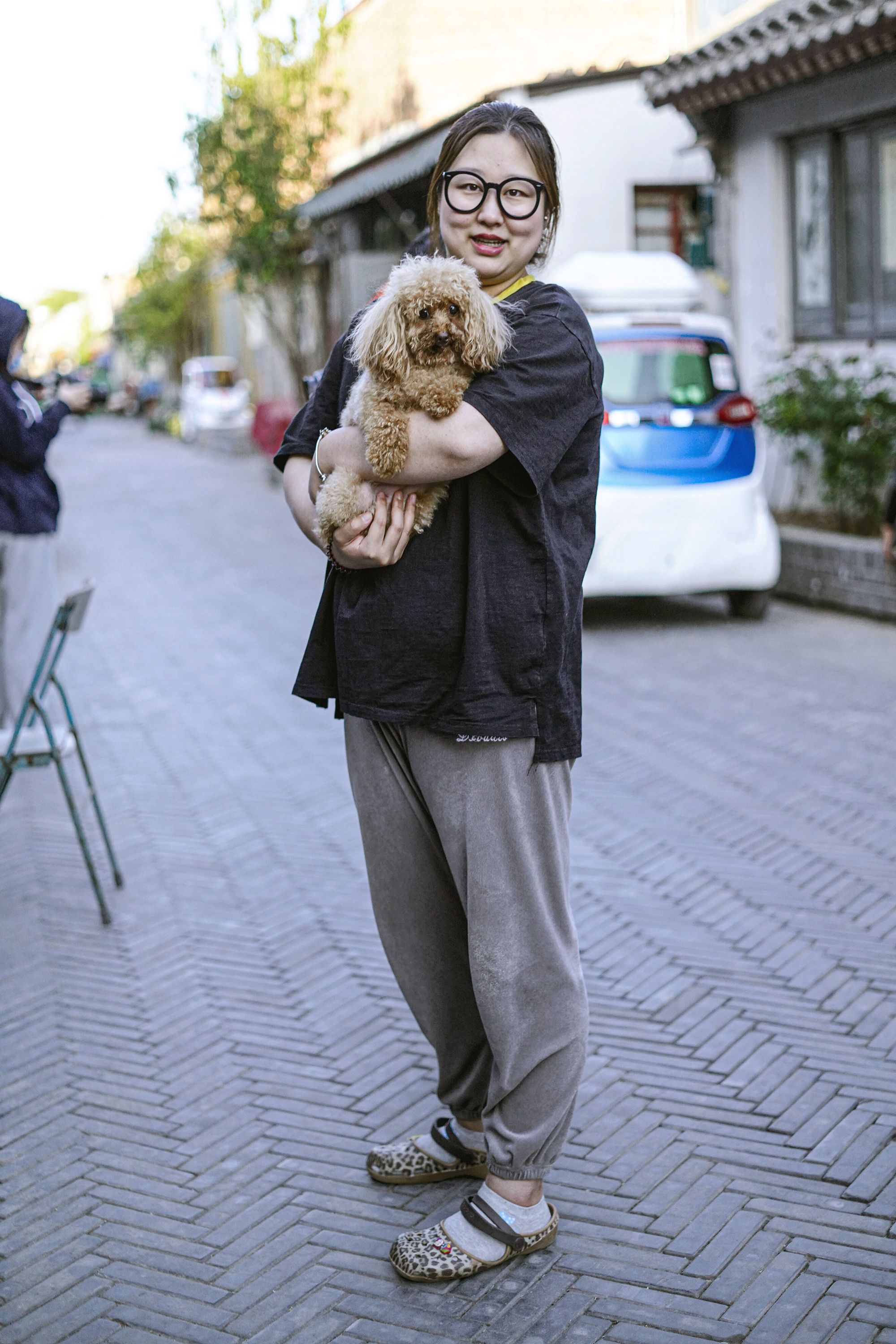
Miss Zhang, a native Beijinger, grew up in Yangmei hutong and says she loves traditional hutong life.
Miss Zhang, a native Beijinger, grew up in Yangmei hutong and says she loves traditional hutong life.
5pm
New life in old furances
Shougang Park
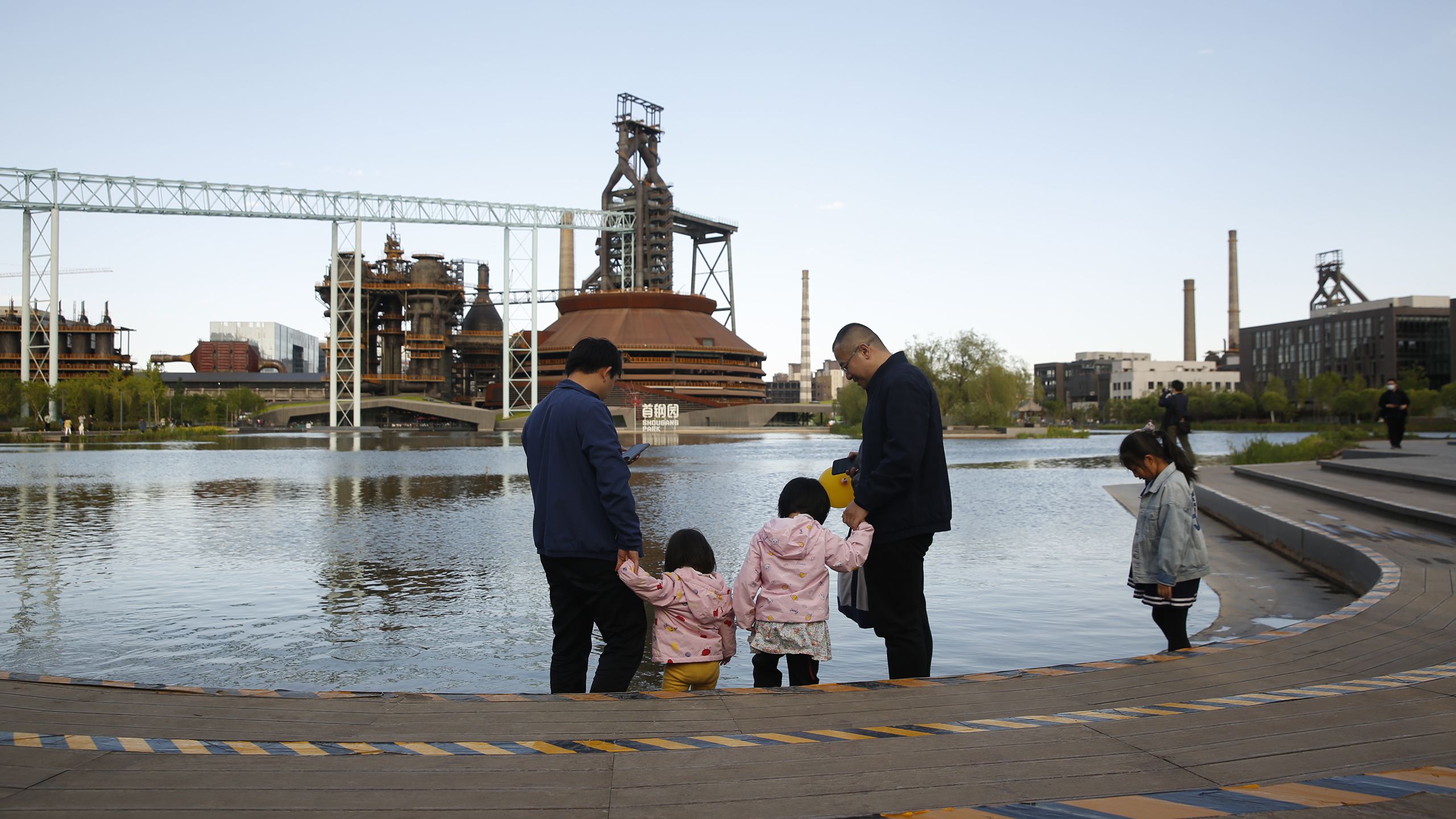
The Shougang steel plant is almost a hundred years old and has recently transformed into a recreational park.
Beijing's old steelworks have long been shuttered but the imposing structures of furnaces, chimneys, and cooling towers will take you back to the industrial boom era. Located in the west of the capital, with a mountainous backdrop, Shougang Steelworks was closed ahead of the 2008 Beijing Olympics to curb pollution but has recently been transformed into a vast recreational park and will host a Big Air ramp, which will be used for freestyle skiing and snowboarding events in the 2022 Beijing Winter Olympics. One of the best ways to tour the vast park is to hire a tandem bike for an hour or so, it's also worth staying a little after dusk to enjoy the scenery as the park lights up.
In 2011, Shougang shut down all of its iron-making blast furnaces. But walking among the now silent iron and steel machines, you can still imagine the noise of these huge machines in operation. Many structures have added aerial walkways and visitors can climb the glass skywalks to enjoy a panoramic view of Steel City, the Olympic Ice and Snow World, the new Shougang Bridge, the Yongding River, and Shijingshan Mountain.
With a unique blend of natural beauty and industrial heritage, the building complex is a testament to the development of Beijing's steel industry. With a bit of luck, you may even bump into a Winter Olympic athlete here.
"After a long week at work, we enjoy visiting Shougang on the weekend. My daughter loves the buildings and wathcing the small fish in the lake.

Wang Ying (L) and Li Ping (R) visit Shougang Park with their four-year-old daughter.
Wang Ying (L) and Li Ping (R) visit Shougang Park with their four-year-old daughter.
7pm
Water world
Houhai

Houhai is on every tourist hit list and with good reason, there's something for everyone from culture, food, shopping, and late-night cocktails with live music.
Arrive at Houhai in time to see the sunset over the vast lake, then watch the area transform from a peaceful park into a lively, neon-lit nightspot. Stone bridges cross the river giving visitors a chance to take in the surroundings, though you’ll need to vie for space with selfie snappers.
The time-honored Houhai lake in north-central Beijing is one of three large lakes in the city that form part of a canal system built in the Yuan dynasty (1279–1368) to transport drinking water into the capital.
Houhai’s shores are lined with willow trees, cafes, teahouses and restaurants, and ancient Hutongs which are now bustling shopping areas. The ‘people watching’ is superb, you’ll find young couples on first dates, families boating on the water, and elderly residents strolling and exercising. If you are lucky you might also spot a dedicated troupe of local outdoor swimmers, who even cut a hole in the ice that forms during the bitter winter months for winter plunging.
The lake is surrounded by several ancient Hutongs and wandering through the winding streets is a favorite with tourists. Yandaixie is one of Beijing’s oldest commercial streets, it traditionally sold jade, paintings, and tobacco products. Nowadays, it’s been renovated and is lined with local souvenirs and snacks.
When night falls, the lights turn on and bars on both sides of the lake attract visitors with live bands performing everything from jazz to reggae. Order a cocktail and enjoy the music in to the small hours.
“I often come here to record live broadcasts, I’m interested in Chinese culture, especially ancient architecture and so are my Japanese fans. Houhai reminds me of a traditional water town in south China, the scenes and pavilions imitate the Tang and Song dynasty giving a poetic and romantic atmosphere.”

Yang Xuanyi is a Beijing-born Japanese. She’s a live stream host and describes Houhai as a place full of Chinese classical flavor.
Yang Xuanyi is a Beijing-born Japanese. She’s a live stream host and describes Houhai as a place full of Chinese classical flavor.
9pm
Ghost Street Eats
Ghost Street

Take a 90-second visual tour of Beijing's liveliest and spiciest food streets. | Photo by Sung Mingwhang
Ghost Street is a great dinner choice, it's a cornerstone of Beijing nightlife, and popular with locals and foreigners alike. The mile-long food street features more than 100 restaurants, most of which are open 24-hours. Pungent Sichuan cuisines dominate, and spicy crayfish and hot pot are the street's signature dishes. People queue for their favorite dishes but don't let this put you off - it's worth the wait and you won't get bored. The street is bustling day and night, but the atmosphere and energy peaks in the evenings when hundreds of hanging red lanterns light up, and groups of friends take a late-night dinner.
The later it gets, the brighter the lights shine, and the aroma of crayfish and hot pot wafts in the air. After eating your crayfish, grab a bowl of noodles and blend the noodles in rich crayfish juice - the most authentic way of eating crayfish for locals.
There are a number of competing tales about how the street got its spooky name. Some say it dates back to Qing Dynasty vendors who held a market at night and left before dawn, the light of their coal-lit lamps appeared mysterious in the dark so you don't have to worry about any ghosts lingering on the street. Just to be safe during the 1980s, the streets name got an official change, replacing 簋 'Guǐ' or Ghost) with 鬼 'Guǐ, a type of ancient bronze food vessel.
"Even at midnight, Guijie Street is way more lively than my hometown and the food is really great!"

Zhang Yan hails from Gansu province. He is a junior chef in Huda, one of Ghost Street's most popular restaurants He left his hometown to live and work in Beijing in 2021.
Zhang Yan hails from Gansu province. He is a junior chef in Huda, one of Ghost Street's most popular restaurants He left his hometown to live and work in Beijing in 2021.
